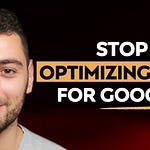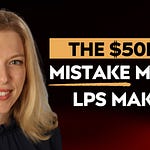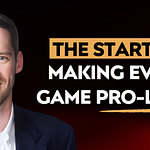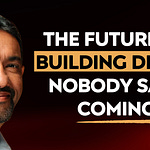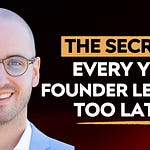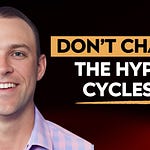When Eric Ries wrote The Lean Startup more than a decade ago, he gave entrepreneurs a framework that transformed how companies are built. Instead of relying on intuition, massive funding rounds, and long development cycles, Ries urged founders to test, learn, and iterate rapidly. The “minimum viable product” (MVP) became standard practice, and validated learning became the new mantra for Silicon Valley and beyond.
But Eric’s story — and his mission — go far beyond Lean Startup. In this conversation, he reflects on his journey from early startup failures to reshaping entrepreneurial thinking, and how he’s now focused on solving an even bigger problem: the short-termism that plagues public markets. His work with the Long-Term Stock Exchange (LTSE) aims to rewire incentives for companies, investors, and boards to prioritize mission, innovation, and sustainability over quarterly earnings.
Here’s a breakdown of the key themes and insights from the discussion.
From Early Failures to Lean Startup
Eric’s passion for computers began as a kid tinkering with floppy disks and programming. By the time he discovered startups during the dot-com boom, he was hooked. But his first companies failed — often spectacularly. These experiences forced him to question the “best practices” of Silicon Valley and ultimately led him to experiment with a different approach: faster product releases, customer involvement from day one, and a scientific mindset for building companies.
At the time, these ideas were considered bizarre. Investors pushed back, due diligence experts dismissed him, and even co-founders wondered if he was pushing things too far. But the evidence was undeniable: startups that embraced experimentation and customer feedback were outpacing those stuck in multi-year waterfall product cycles.
That approach became the foundation of The Lean Startup — a book that spread globally, influenced millions of founders, and became a staple of startup culture.
Scaling Lean: The Startup Way
After the success of The Lean Startup, Eric found himself advising not only startups but also Fortune 500 companies, governments, and nonprofits. This led to his second book, The Startup Way, which applied lean principles inside large organizations. The challenge wasn’t just building something new but sustaining innovation at scale.
He describes it as a “backstage pass to business,” where he saw firsthand how vast the world of commerce is compared to the relatively small startup ecosystem. Even in 2025, many companies are still only beginning to adopt digital transformation or rethink how they innovate.
Why Short-Termism is Killing Innovation
As Eric worked with companies that scaled from garage startups to multi-billion-dollar enterprises, he noticed a disturbing trend: nearly all of them eventually succumbed to short-term thinking.
Executives cut R&D to meet quarterly numbers. Boards prioritized stock price over customer service. Even beloved brands lost their sense of purpose after going public.
He calls it a tragedy of incentives: when leaders are rewarded for short-term stock pops, long-term investments and innovation get starved. One striking example: airlines like Virgin America, once loved by customers, were sold against founders’ wishes because public markets demanded it.
The baggage handlers Eric met understood the problem better than policymakers: “Once you go public, you’re for sale whether you want to be or not.”
The Long-Term Stock Exchange (LTSE)
Eric realized he couldn’t just write about the problem — he needed to fix it. So he launched LTSE, a fully regulated national securities exchange designed for companies that want to commit to long-term governance and incentives.
Unlike NYSE or NASDAQ, LTSE requires companies to outline how they will align boards, employees, and investors with long-term priorities. Even modest early changes have shown measurable results: companies listed on LTSE attract more long-term investors and begin shifting away from short-term traders.
Eric’s ultimate vision is to build a system where mission-driven companies can thrive without being derailed by quarterly earnings pressures.
Lessons from Costco and Novo Nordisk
Two case studies stand out in Eric’s philosophy of “mission-controlled companies”:
Costco: Despite being criticized for poor “governance” ratings, Costco has outperformed competitors like Kroger by sticking to its mission of serving customers, even keeping its famous $1.50 hot dog for 40 years. Its governance fortress protected it from short-term investor attacks and preserved its long-term culture.
Novo Nordisk: Structured as a foundation-owned company since the 1920s, Novo Nordisk rejected a lucrative merger in the early 2000s because it didn’t align with its scientific mission. A few years later, their long-term bet on GLP-1 drugs paid off, making them the largest company in Europe and one of the most profitable in the world.
Both examples prove that aligning governance with mission can create massive shareholder value — far more than chasing quarterly gains.
The AI Bubble — and Why It Still Matters
Eric also shared his perspective on AI. He acknowledges the bubble-like behavior: inflated valuations, unsustainable hype, and startups built on shaky assumptions. But, like the telecommunications boom, he believes AI is both a bubble and a genuine technological revolution.
The key? Recognizing that experimentation is still required, much like Edison’s thousands of failed attempts before perfecting the light bulb. The future will depend on how well we channel AI into trustworthy, mission-driven companies — not just hype-driven valuations.
Advice for Founders and Investors
For today’s entrepreneurs, Eric emphasizes:
Define your purpose early. Your governance documents may already undermine your mission if you’re not careful.
Don’t fall into the short-term trap. Mission-controlled structures help companies endure.
AI isn’t a silver bullet. Use it to enhance experimentation, but don’t let it replace critical thinking.
Investors should focus on love, not hype. The best investors are those founders call first because they deeply understand and support them.
Looking Ahead
Eric admits the future feels uncertain. We’re living in a time of immense technological change and social turmoil. But history shows that dark periods often precede new eras of prosperity and creativity.
His hope: that we can use tools like AI, governance innovation, and mission-driven entrepreneurship to build companies — and societies — that maximize human flourishing.
👂🎧 Watch, listen, and follow on your favorite platform: https://tr.ee/S2ayrbx_fL
🙏 Join the conversation on your favorite social network: https://linktr.ee/theignitepodcast
Chapters:
00:01 – Welcome & Ignite’s 200th Episode with Eric Ries
01:28 – Eric’s origin story: growing up with computers in a family of doctors
03:23 – Early startup failures and hard lessons in Silicon Valley
07:10 – Countercultural ideas that sparked the Lean Startup method
10:43 – Learning from Steve Blank and building a startup theory
12:28 – Naming and launching the Lean Startup movement
14:06 – From The Lean Startup to The Startup Way: scaling ideas inside large companies
16:32 – Observations on short-termism across corporations
18:25 – Virgin America, Wall Street, and the spark for the Long-Term Stock Exchange (LTSE)
21:38 – How LTSE works and its principles-based listing standards
24:55 – The hidden cost of quarterly reporting on markets
26:45 – Founder-led vs. traditional governance practices
27:36 – Costco’s governance “fortress” and lessons in long-termism
33:53 – Why mission-driven companies outperform short-term players
37:32 – Designing “mission-controlled” companies for the future
41:20 – The AI boom: bubble behavior vs. true disruption
46:41 – The coming societal impact of AI and institutional change
48:08 – Advising early-stage founders on purpose, trust, and governance
53:50 – Lessons from Novo Nordisk: mission structure driving $500B+ value
59:32 – Anthropic’s governance model and mission boards for AI
01:02:23 – Investing as an LP and building First Momentum Capital
01:05:32 – Audience Q&A: U.S. innovation, AI’s role in Lean Startup, and new paradoxes
01:11:32 – Looking ahead: Eric’s hopes and concerns for the next decade
01:12:37 – Closing thoughts & rapid-fire wrap-up
Transcript
(00:01:07): Hey, everyone. Welcome back to the Ignite Podcast. Today, we’re thrilled to have the one and only Eric Ries on the mic. He is the author of The Lean Startup. And if you listen to this podcast, you should probably know that. The founder of the Long-Term Stock Exchange and the host of The Eric Ries Show. His work has helped a generation of founders move faster with less waste. And lately, he’s been pushing on something bigger, how to build trustworthy, mission-driven companies that compound for decades. Thanks for coming on, Eric.
(00:01:30): Hey, thanks for having me. And this is the very special 200th episode. So I appreciate you being the very special 200th guest of the Ignite Podcast. First of all, on 200 episodes. First of all, that’s an honor. I’m very happy to be chosen as a special guest, but more importantly, so few podcasts have any kind of longevity to them. I really like what I do. You know, it’s kind of like it all interlocks with Team Ignite, right? What we do, how we try to help founders, how we try to build a network of people to help founders. And we got introduced through a founder that we had backed, Chris Knowledge. I was like, you know, Eric, I’d love to get an intro to Eric. He’s like, oh, yeah, I’m making an intro to Eric. And here we are. And it just worked out the timing. It was perfect. I was like, okay, I think it’s going to be the 200th episode. This is perfect.
(00:02:11): Yeah. But it was just meant to be an introduction, especially in startup circles. But I’d love to get your background. What’s your origin story?
(00:02:17): Well, let’s see. I come from a family of doctors, going back to my grandparents’ generation. So what I do is considered kind of disreputable in the family. That’s the first thing you’ve got to really understand. So I was supposed to be a doctor, but I loved computers from a young age. And I remember my father brought home a beige IBM XT personal computer. For those who are old enough to remember such a thing, it had a five and a quarter inch floppy disk drive, the kind of drive that was powered by a rubber band to turn the spool. I mean, we’re talking about old stuff here. And from the moment he brought it home, I just thought it was total magic to be able to, all I wanted to know was how to make it work, how to program it. To me, the idea that you could like think thoughts and make them tangible through software just seemed like such a magical act and such a superpower. So I was like, psyched to be into computers from a kid. That made my family really worried about what’s my future going to look like. And then when I found out that it was a job you could do to be a computer programmer, that’s all I ever wanted to do. So I wrote a bunch of programming books when I was in high school. I got a computer science degree and I thought I would be on the computer programming track for my whole life. That’s all I really wanted to do.
(00:04:08): But then in college, I had the chance to do an internship in Silicon Valley. And for the first time, I was introduced to this idea of startups. And I saw up close what entrepreneurship was like. And I just completely fell in love with it. I was like, oh my God, this is even better than computer programming. Because it wasn’t just that you could think thoughts and make them tangible in software. You could think thoughts and make them tangible in the real world. And it was like, that is so cool. And I just completely fell in love. And I’ve been doing it ever since.
(00:04:33): Wow. And so what was that first foray into startups?
(00:04:37): Well, my first internship was at this company called There.com. It was like a virtual reality metaverse kind of company before there was such a thing. And I worked there on a project to build their virtual currency system. And I was like, wow, you can just make up money. This is amazing. So I was really hooked from the beginning. Then I had a chance to do a startup right out of college. It was a total disaster. Total, total disaster. But I learned a lot from it. Then I went to work at another startup that was a little bit less of a disaster. Then I did my own startup. That was a moderate disaster. And then finally, my fourth startup was IMVU, which actually was successful. So three disasters in a row before getting something that actually worked.
(00:05:19): Yeah. That’s the path. That’s the path. And IMVU, I think, you know, a lot of people know that story. What were some of the early lessons? I mean, that was the birthplace of Lean Startup, if I remember right.
(00:05:28): Yeah, that’s right. So IMVU was an avatar-based social network. We were trying to get people to buy clothes for their avatars. So it was like selling digital fashion before that was a thing. And the big breakthrough we had was the realization that you could learn from customers even before you built the product. And that was the origin of the Lean Startup idea. Instead of spending years and years building something in stealth mode, you could actually put something in front of customers right away, even if it was terrible, even if it was buggy, even if it was embarrassing, and learn from their behavior. And then iterate quickly based on that. That was the breakthrough idea.
(00:06:05): And that was totally countercultural at the time.
(00:06:07): Oh my God, totally. Totally. At that time, the conventional wisdom in Silicon Valley was you had to be stealth. You had to hide what you were doing because otherwise someone would steal your idea. So everyone was like stealth, stealth, stealth. And I was like, stealth is death. If you’re in stealth, you can’t get customer feedback. And if you can’t get customer feedback, you don’t know if what you’re building is any good. So you’re just setting yourself up for failure.
(00:06:30): And so what was the moment where that Lean Startup concept crystallized for you?
(00:06:34): You know, there was a particular moment when we had spent like six months building this really complicated feature that we were sure customers were going to love. And when we launched it, nobody cared. Nobody used it. And we were just like, oh my God, what a disaster. And I remember thinking, we cannot afford to make this mistake again. We need a different approach. And that was the moment where I was like, okay, we have to validate our ideas with customers before we build them. That was the big turning point.
(00:07:06): And you codified this into a methodology that has been adopted globally. I mean, it’s almost hard to overstate the impact that Lean Startup has had. Did you have any inkling at the time that it would become this big?
(00:07:19): No, no way. At the time, it was just a way to save my own skin. You know, it was like, I’m going to get fired if we keep screwing up like this. So I was just trying to save my own job and save our company. I never in a million years imagined that it would spread around the world the way it has.
(00:07:38): Yeah. And so what was that journey like? How did Lean Startup go from something you were doing internally at IMVU to becoming this global phenomenon?
(00:07:48): Well, it started with me just blogging about it. I was like, I’m just going to write down some of the things I’m learning and share them. And people started reading the blog and sharing it. And then I got invited to give some talks. And then I got invited to give more talks. And then I started getting invited to conferences. And it just kind of snowballed from there. And then eventually, people were like, hey, you should write a book about this. And I was like, okay, I’ll write a book. And then the book just took off.
(00:08:17): Yeah, I think that book is still like required reading at YC.
(00:08:21): Yeah, it’s amazing. I still meet people all the time who are like, I read your book in college. And I’m like, wow, I’m old.
(00:08:29): It’s incredible. And I think one of the things that’s really powerful about Lean Startup is that it empowers founders who might not have access to tons of resources. It gives them a way to be scrappy and still make progress.
(00:08:42): Yeah, that was really important to me. Because when we were doing IMVU, we didn’t have a lot of money. We didn’t have a lot of resources. We were like, how do we compete with these big companies that have way more money than us? And the answer was, we can be more agile. We can be faster. We can learn faster than they can. And that was the edge that allowed us to succeed.
(00:09:05): And it’s so relevant today. I mean, with the cost of capital where it is, with the environment that founders are operating in, being lean is not optional. It’s mandatory.
(00:09:15): Totally. Totally. I actually think it’s even more relevant today than it was back then. Because back then, there was a lot of cheap capital sloshing around. Now, it’s like you really have to be disciplined.
(00:09:34): So Lean Startup becomes this global movement. You’ve got conferences, you’ve got books, you’ve got this massive following. What was the next evolution for you after that?
(00:09:44): Well, after Lean Startup kind of took off, I had this moment of reckoning where I was like, okay, now what? Because I didn’t want to just be like the Lean Startup guy forever. I didn’t want that to be my tombstone. So I started thinking about, what’s the next problem I want to work on? And for me, the big question was, how do we build companies that are not just lean, not just innovative, but also long-term oriented, mission-driven, and trustworthy? Because I was seeing all these companies that had adopted Lean Startup techniques, they were iterating, they were agile, but they were still blowing up in scandals, still failing in ways that were really harmful to society. And I was like, okay, something is missing here.
(00:10:28): Yeah. That’s such a powerful insight. Because we’ve all seen examples of companies that technically succeeded but failed in terms of mission or values.
(00:10:38): Totally. And I just kept seeing it over and over again. It’s like, what good is it to build a successful company if it’s not trustworthy, if it’s not aligned with the long-term interests of society? So I started thinking, okay, how do we fix that? And that’s what led me to start working on the Long-Term Stock Exchange.
(00:10:57): Let’s talk about that. Because I think a lot of people have heard of LTSE, but they don’t really know what it is. What is the Long-Term Stock Exchange?
(00:11:06): So LTSE is a national securities exchange, like Nasdaq or the New York Stock Exchange, but with a twist. Our whole focus is on long-termism. So we have a set of listing standards that require companies that list on our exchange to commit to long-term practices — things like building a long-term governance structure, aligning executive compensation with long-term value creation, treating employees as long-term assets, and so on. The idea is to create an environment where public companies can be held accountable not just for the next quarter, but for the next decade.
(00:11:42): That’s huge. Because one of the biggest critiques of the public markets is that they force companies to be short-term oriented, to optimize for quarterly earnings at the expense of everything else.
(00:11:53): Exactly. That’s the disease. The short-termism disease. And we’ve seen how destructive it can be. Companies that cut R&D, that underinvest in their people, that do stock buybacks instead of investing in the future. It’s all driven by this pressure to hit the next quarter’s numbers. And so LTSE is an attempt to change those incentives.
(00:12:18): So how does it work in practice? Like, if I’m a founder of a company that wants to go public, what’s different about listing on LTSE?
(00:12:27): Well, first of all, you can dual-list. So you can be on Nasdaq or NYSE and also list on LTSE. It doesn’t change your access to capital. But what it does is it requires you to publish a set of long-term policies — how you’re going to treat your employees, how you’re going to invest in R&D, how you’re going to engage with your community. And those policies are binding. Investors can hold you accountable to them. And the cool thing is, a lot of long-term oriented investors — pension funds, sovereign wealth funds, university endowments — are really excited about this, because they want to put their money into companies that are aligned with their time horizon.
(00:13:04): That’s really interesting. Because it feels like it creates a new kind of social contract between companies and investors.
(00:13:12): Yeah, that’s exactly the idea. It’s like, what if we could create a system where doing the right thing for the long term is also the smart thing financially? That’s the vision.
(00:13:23): And how has it been received? I mean, building a new stock exchange is no small feat.
(00:13:29): Oh my God, it’s been the hardest thing I’ve ever done. By far. It took us years just to get the SEC to approve our application. We had to go through this grueling regulatory process. And then, of course, building trust with companies, with investors, with the ecosystem. It’s been a long road. But I’m really proud that we’ve gotten it off the ground. We have companies listed, we have investors who are supportive. It’s still early days, but the foundation is there.
(00:14:01): That’s incredible. And I think it ties back to something you’ve talked about a lot, which is this idea of mission-driven companies. Because LTSE is really about creating an ecosystem where mission-driven companies can thrive.
(00:14:15): Exactly. And that’s what gets me up in the morning. Like, how do we create a world where companies that are truly mission-driven, that are trying to solve big problems, can succeed without having to compromise their values? That’s the north star.
(00:14:32): So let’s zoom out on this idea of mission-driven companies. Because I think it’s one of those phrases that gets thrown around a lot. What does it actually mean to you for a company to be mission-driven?
(00:14:44): For me, it means that the company is structured from the ground up to accomplish something in the world beyond just making money. It doesn’t mean you don’t make money. Of course you have to make money to survive. But the money is in service of the mission, not the other way around. And you can tell the difference. You can tell when a company is truly mission-driven because their decisions, their culture, their governance all align with that purpose. It’s not just words on a wall. It’s baked into how they operate.
(00:15:18): Yeah, I love that. And I think founders sometimes struggle with that. Because they feel like, okay, I have to make investors happy, I have to make money, and then mission is like a nice-to-have.
(00:15:29): Right. And that’s the trap. If you treat mission as a side project, it will always get sacrificed when times get tough. The only way it works is if mission is core to your business model, if it’s inseparable from how you create value.
(00:15:46): That resonates a lot. And I think it’s one of the reasons we wanted to have you on for this 200th episode. Because so many of our founders are grappling with these questions. They want to build companies that matter, but they’re in the trenches, raising money, trying to survive.
(00:16:02): Yeah. And listen, I get it. I’ve been there. I know how hard it is. That’s why I’m so passionate about trying to change the system. Because right now, the system pushes founders to compromise, to take shortcuts, to do things that aren’t aligned with their mission. If we can change the system, then it becomes easier for founders to stay true to their mission.
(00:16:25): So what advice would you give to a founder who’s listening to this, who’s like, okay, I want to be mission-driven, but I’m also trying to raise a seed round, I’m trying to keep the lights on. How do I balance that?
(00:16:38): The first thing I would say is, get really clear on what your mission actually is. Write it down. Make it specific. Not some vague, feel-good statement, but a concrete articulation of what you’re trying to accomplish in the world. And then use that as your north star for every decision. When you’re talking to investors, be upfront about it. Say, this is who we are, this is what we stand for. And yes, some investors will say no. But the ones who say yes will be the right partners for you. And in the long run, that alignment is worth more than any check size.
(00:17:14): That’s such good advice. Because I think a lot of founders are afraid to do that. They’re afraid to scare off investors.
(00:17:21): I know. But here’s the thing — if you compromise on your mission to get an investor on board, you’re going to regret it later. I’ve seen it happen so many times. The misalignment will come back to bite you. Better to have fewer investors who are truly aligned than a cap table full of people who don’t get what you’re trying to do.
(00:17:45): Yeah. And I think the founders who are listening to this will take a lot of comfort from hearing that from you.
(00:17:52): I hope so. Because this is not just about idealism. This is about building durable, successful companies. The companies that really endure are the ones that are mission-driven.
(00:18:07): And it’s interesting because if you look at the companies that have endured for decades, the ones that are still around, they almost always have that mission at the core.
(00:18:16): Exactly. Think about companies like Patagonia, or even companies like Johnson & Johnson back in the day with their credo. These companies that have had that mission baked in from the start are the ones that can weather crises, that can adapt over time, because they’re anchored in something deeper than just this quarter’s earnings.
(00:18:37): So let’s bring this back to the practical. If I’m a founder listening, and I’m like, okay, I want to build a mission-driven company, what are some concrete steps I can take early on to embed that mission into my company?
(00:18:50): Great question. The first thing is governance. Who has power in your company? Who’s on your board? What are their incentives? If your board is made up entirely of short-term oriented investors, don’t be surprised if you get pushed to do short-term things. So think carefully about who you put in positions of power.
(00:19:12): Second, documentation. Write down your mission, your values, your long-term policies. Don’t just have them in your head. Put them on paper, publish them, make them real. That makes it much harder to backslide when times get tough.
(00:19:30): Third, compensation. How are you incentivizing your team? If everything is tied to short-term metrics, you’re going to get short-term behavior. You have to align incentives with the long-term.
(00:19:43): Those three things — governance, documentation, and compensation — go a really long way in embedding mission into your company.
(00:19:54): I love that. And it’s so actionable. Because I think sometimes people think “mission-driven” is this abstract, fuzzy thing. But what you’re saying is, no, it’s actually about concrete structures and incentives.
(00:20:08): Exactly. Mission is not just words. It’s design. It’s structure. It’s incentives. If you get those right, the mission will endure. If you don’t, the mission will get sacrificed at the first sign of trouble.
(00:20:24): So let’s shift gears a little bit. You’ve been working on these big systemic questions with LTSE. But you’re also still very connected to founders on the ground. What are you seeing right now in the startup ecosystem? What’s different about this moment compared to, say, five or ten years ago?
(00:20:42): Oh, man. It’s a really interesting time. On the one hand, the macro environment is much tougher. Capital is more expensive. The easy money days are over. So founders are having to be much more disciplined, much more thoughtful. On the other hand, the tools available to founders today are incredible. The cost of starting a company has never been lower. You’ve got AI tools, you’ve got global distribution, you’ve got remote work. The leverage a small team can have today is extraordinary. So it’s kind of a paradox. It’s harder in some ways, but the opportunities are bigger than ever.
(00:21:21): Yeah, I see that too. And I think a lot of founders are trying to navigate that paradox. On the one hand, they have these incredible tools. On the other hand, the bar is higher.
(00:21:33): Exactly. The bar for excellence is higher. Customers expect more. Investors expect more. You can’t just raise money on a napkin sketch anymore. You have to show real traction, real insight, real ability to execute. But if you can do that, the upside is massive.
(00:21:52): And in some ways, that feels healthier, right? Because it weeds out the people who are just in it for the hype.
(00:21:59): Totally. Totally. I actually think this is a really healthy correction. The frothy years created a lot of bad habits. Now we’re getting back to fundamentals. Build something real. Serve real customers. Create real value. That’s what matters.
(00:22:18): And it feels like we’re entering a new era. Like, the AI wave is clearly a huge deal. How are you thinking about that as someone who’s been through multiple waves of technology?
(00:22:30): Yeah, it’s wild. I’ve been through a few hype cycles in my career. And AI is definitely one of the biggest. It’s got that same kind of energy that the internet had in the 90s, that mobile had in the 2000s. You can feel it. The question, of course, is, what are the real use cases? What are the enduring business models? We’re still figuring that out. But the potential is enormous.
(00:22:57): And how should founders approach it? Because I think there’s this temptation to just slap AI on whatever you’re doing.
(00:23:06): Yeah, totally. I always say, don’t be an “AI company.” Be a company that solves a real problem, that creates real value for customers, and then use AI as a tool to do that better. If you’re just trying to ride the AI hype, you’ll be forgotten in six months. But if you’re solving a real problem in a way that’s 10x better because of AI, then you’ve got something.
(00:23:32): That’s such good advice. Because I think a lot of people are getting distracted by the shiny object, instead of focusing on fundamentals.
(00:23:40): Fundamentals never go out of style. That’s one of the lessons of Lean Startup. Technology changes, markets change, but the fundamentals of building something people want, testing your ideas quickly, iterating based on feedback — those things never change.
(00:23:59): I love that. Okay, let’s talk about longevity. Because one of the things you’ve been pushing on is not just how to start companies, but how to build companies that last. What have you learned about durability?
(00:24:11): Yeah, so this is a big one. I think the number one predictor of durability is culture. If you look at companies that have endured, it’s not because they had the best product at one point in time. Products come and go. It’s because they had a culture that allowed them to keep reinventing themselves, to keep learning, to keep adapting. Culture is the ultimate durable competitive advantage.
(00:24:37): That’s so true. And yet culture feels like one of those things that a lot of founders put off. They’re like, oh, we’ll deal with culture later.
(00:24:46): Exactly. And that’s the mistake. Culture is not optional. Culture is happening whether you’re intentional about it or not. So the question is, are you going to design your culture, or are you going to let it happen by accident? If you’re intentional, you can build a culture that reinforces your mission, your values, your long-term orientation. If you’re not, you’ll end up with whatever random culture emerges, which is usually short-term oriented, because short-term pressures are everywhere.
(00:25:19): So what are some practical steps for founders to be intentional about culture from the beginning?
(00:25:25): First, write down your values. Even if it feels premature. Even if you’re just two people in a garage. Write down what you stand for. Second, model those values as a leader. People don’t do what you say, they do what you do. Third, hire for values fit, not just skills. You can teach skills. You can’t teach values. If you get those three things right early, you’re setting yourself up for long-term durability.
(00:25:55): That’s gold. And it feels very connected to what you were saying earlier about governance and compensation. It’s all about alignment.
(00:26:05): Totally. Alignment is the key. Alignment between mission, culture, governance, incentives. If all those things are pulling in the same direction, you get this incredible flywheel effect. If they’re misaligned, you get dysfunction, you get scandals, you get burnout.
(00:26:24): And burnout is such a huge issue right now. We see so many founders who are just exhausted.
(00:26:32): Yeah, it’s a crisis. And I really worry about it. Part of the problem is that we have this mythology in startup culture of the heroic founder who sacrifices everything, who never sleeps, who works 24/7. And that’s just not sustainable. You can maybe do that for a year or two, but you can’t do it for a decade. And if you want to build something that lasts decades, you have to pace yourself. You have to build a sustainable way of working.
(00:27:01): That’s such an important message. Because founders sometimes feel guilty if they’re not killing themselves.
(00:27:09): I know. And it’s toxic. We have to change that narrative. The founders I admire most are the ones who are disciplined, who take care of themselves, who build strong teams, who don’t make themselves the bottleneck for everything. That’s real leadership.
(00:27:28): Yeah. And it connects back to durability. If you burn out, the company burns out.
(00:27:34): Exactly. Founder burnout is company burnout. So if you want a durable company, you have to be a durable founder.
(00:27:44): Let’s talk about investors for a second. Because one of the themes we hear from founders is that investor pressure is often what pushes them into short-termism, into burnout, into compromising their mission. How do you think about the role of investors in all this?
(00:28:02): Investors have a huge responsibility. And honestly, a lot of investors are part of the problem. They talk a good game about being long-term oriented, but then they push for short-term milestones, short-term exits. What we need are investors who are truly aligned with the long-term, who are willing to be patient, who are willing to support founders through the ups and downs.
(00:28:27): So how do founders find those investors?
(00:28:31): It’s hard. But one thing I always tell founders is, pay attention to what investors do, not just what they say. Look at their track record. Look at how they’ve behaved with past companies. Talk to other founders they’ve backed. Do they really support the long-term, or do they cut and run when things get tough? That tells you everything you need to know.
(00:28:56): That’s such practical advice. Because I think a lot of founders just focus on getting the check, and they don’t do enough diligence on the investors.
(00:29:07): Yeah, exactly. And that’s a mistake. The wrong investor can sink your company. The right investor can be a game-changer. So take the time to find alignment. It’s worth it.
(00:29:21): So if you had to boil it down, what’s the core message you want founders to take away about building mission-driven, durable companies?
(00:29:31): The core message is this: Mission is not a luxury. Mission is the foundation. If you want to build a company that lasts, if you want to build a company that matters, you have to put mission at the center from day one. Everything else flows from that.
(00:29:54): I love that. Okay, let’s talk about your own mission. Because you’ve done Lean Startup, you’ve done LTSE, you’ve been an author, an advisor, an investor. What’s the through-line for you?
(00:30:07): For me, it’s always been about empowerment. How do we empower people to build things that matter? That’s the common thread. Lean Startup was about empowering founders to build products that people actually want. LTSE is about empowering companies to stay true to their mission in the public markets. Everything I’ve done is about trying to shift power to people who are trying to do the right thing.
(00:30:34): That’s such a beautiful way to put it. And I think it really resonates with this audience, because that’s what Ignite is all about too — empowering founders.
(00:30:44): Exactly. That’s why I was excited to do this. Because I feel like we’re on the same mission.
(00:30:50): Okay, let’s go tactical for a minute. Because one of the things people love about this show is that we give founders practical tools they can use right now. So if I’m a founder listening to this, what are some tactical things I can do this week to move toward being more mission-driven?
(00:31:09): Great. Let’s get practical. First, audit your governance. Who’s on your board? Who has decision-making power? Are they aligned with your mission? If not, start thinking about how to change that.
Second, write down your long-term policies. Even if you’re private, even if you’re early stage. Write down how you’re going to treat employees, how you’re going to invest in innovation, how you’re going to engage with your community. Put it on your website. Make it public. That creates accountability.
Third, talk to your team about the mission. Don’t assume they know it. Don’t assume they feel it. Make it explicit. Ask them how their work connects to the mission. Make it part of the daily conversation.
Those three things alone can make a huge difference.
(00:31:59): That’s fantastic. And I love how concrete it is. Because a lot of people talk about mission in this lofty way, but what you’re giving us is like, here’s what you do on Monday morning.
(00:32:11): Exactly. Mission is not just philosophy. It’s practice. It’s discipline.
(00:32:19): Let’s talk about mistakes. What are the biggest mistakes you see founders make when it comes to mission?
(00:32:26): Number one, treating mission as marketing. Mission is not a slogan. It’s not something you put in your pitch deck to make investors feel good. If it’s not real, if it’s not lived, people will see through it.
Number two, failing to embed mission into governance. If your mission is not protected at the board level, it’s vulnerable.
Number three, thinking mission means being “nice.” Mission-driven companies still have to make hard decisions. They still have to be disciplined. Mission is not about being soft. It’s about being aligned.
(00:33:07): That last one is so important. Because I think sometimes mission-driven gets equated with being “kumbaya.” But what you’re saying is, no, it’s actually about rigor.
(00:33:18): Exactly. Mission-driven companies can be incredibly tough-minded. In fact, they have to be. Because they’re playing the long game. And playing the long game requires discipline, sacrifice, and courage.
(00:33:37): Love that. Okay, let’s talk about the future. What do you think the next decade looks like for startups?
(00:33:46): I think the next decade is going to be defined by two forces. On the one hand, massive technological change — AI, biotech, climate tech, space. On the other hand, massive societal challenges — inequality, climate change, trust in institutions. The startups that succeed will be the ones that harness the new technologies to solve the big societal challenges. That’s the sweet spot.
(00:34:15): That’s powerful. Because it means the biggest opportunities are also the biggest responsibilities.
(00:34:23): Exactly. The line between doing well and doing good is going away. The companies that create the most value in the next decade will be the ones that solve the hardest problems.
(00:34:37): And what role do you see LTSE playing in that future?
(00:34:42): My hope is that LTSE becomes the natural home for those companies when they go public. That it becomes the place where mission-driven, long-term oriented companies can thrive, where they don’t have to compromise their values to access the capital markets.
(00:34:59): That’s exciting. Okay, we’re getting close to time, but I want to do a couple of rapid-fire questions to close. Ready?
(00:35:07): Let’s do it.
(00:35:09): Favorite book that you recommend to founders (besides your own)?
(00:35:14): “The Innovator’s Dilemma” by Clay Christensen. Still the best.
(00:35:20): Love it. Favorite failure — a time you failed but learned the most?
(00:35:28): Oh, so many to choose from. I’ll go with my very first startup, which was a complete disaster. We built the wrong product, for the wrong customers, at the wrong time. Total wipeout. But I learned everything from that experience. Without that failure, there would be no Lean Startup.
(00:35:51): That’s perfect. Okay, last one. What’s the legacy you hope to leave?
(00:35:58): I hope people say, he helped us build companies that matter. That’s it.
(00:36:06): Beautiful. Eric, thank you so much for being our 200th guest. This has been an absolute honor.
(00:36:12): Thank you. And congrats again on 200 episodes. Here’s to the next 200.



